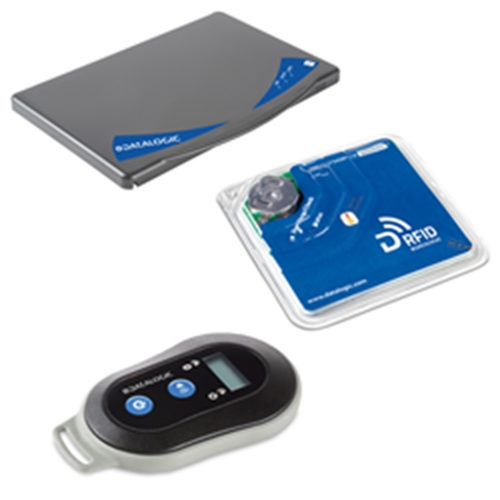Datalogic, a leader in Automatic Data Capture and Industrial Automation markets, and producer of bar code readers, mobile computers, sensors for detection, measurement and safety, vision systems and laser marking equipment, announces three new Ultra High Frequency (868-928 MHz) RFID products:
- DLR-BT001 RFID pocket reader with Bluetooth® wireless technology
- DLR-TL001 low cost temperature logger
- DLR-DK001 desktop UHF RFID reader.

(Credit: PR Web)
Datalogic RFID technology is used in various applications around the globe. This technology assists in optimization and traceability for assuring item availability in non-food retail. Supply chains leverage RFID to reduce claims and returns, assure proof of delivery, and loss prevention. Healthcare enterprises use RFID to track medical devices and drugs, monitor temperature sensitive items and control the delivery of drugs and laboratory samples.
“Datalogic has long been a proponent and developer of RFID technology and continues to elevate its implementation within our target industries,” states Pietro Todescato, CTO of Datalogic. “Our innovative RFID offerings and industry-leading automation and data capture solutions deliver our clients a wide and deep pool of technology for every application.”
The new Datalogic RFID products and associated features are:
DLR-BT001 RFID pocket reader with Bluetooth wireless technology
- USB and Bluetooth wireless communications
- SPP and HID Bluetooth profiles
- Integrated linear polarized antenna
- Read and write options
- Small, lightweight and ergonomic form factor
- Battery powered and rechargeable through a USB connection
- LCD display
- Vibration feedback
- iPhone/iPad compatibility
DLR-DK001 desktop UHF RFID reader
- USB power and communication – no external power supply needed
- Low profile, compact design – easily fits in small spaces at the POS
- Integrated circular polarized antenna
DLR-TL001 temperature logger
- Low-cost temperature logging
- Reliable data collection with high temperature accuracy
- Button and LED for fast inspection
- Extended monitoring time span


